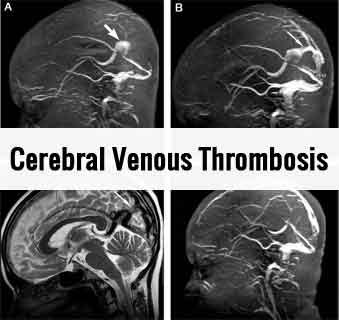- Home
- Editorial
- News
- Practice Guidelines
- Anesthesiology Guidelines
- Cancer Guidelines
- Cardiac Sciences Guidelines
- Critical Care Guidelines
- Dentistry Guidelines
- Dermatology Guidelines
- Diabetes and Endo Guidelines
- Diagnostics Guidelines
- ENT Guidelines
- Featured Practice Guidelines
- Gastroenterology Guidelines
- Geriatrics Guidelines
- Medicine Guidelines
- Nephrology Guidelines
- Neurosciences Guidelines
- Obs and Gynae Guidelines
- Ophthalmology Guidelines
- Orthopaedics Guidelines
- Paediatrics Guidelines
- Psychiatry Guidelines
- Pulmonology Guidelines
- Radiology Guidelines
- Surgery Guidelines
- Urology Guidelines
Bengaluru: Patient recovers successfully after being operated for Cerebral Venous Thrombosis

BENGALURU: Binu Narayan never would have suspected a CT scan of his brain to reveal a rare but critical condition termed as Cortical Sinus Thrombosis or Cerebral Venous Thrombosis, when he paid a visit to the doctor for nausea and giddiness which he was suffering from since the last two days.
After being prescribed some regular medicines and being asked to undertake a CT scan of his brain, both he and the doctors were surprised with the results which showed a large hemorrhagic infraction involving the right half of his brain.
"Such large hemorrhages put significant pressure on the vital structures of the brain...if these aren't treated immediately, they could be dangerous," Dr Venkatesh told the TOI.
Dr Ramesh Ranganathan said, "The MRI revealed that Binu had a significantly large thrombosis of the sigmoid sinus which is a major sinus draining blood from right half of the brain and he had to be operated upon immediately. The surgery, termed Decompressive Craniotomy, was performed on Binu to relieve pressure and to ensure that the adjacent vital structure of the brain was not affected"
Cerebral Venous Thrombosis is the presence of acute thrombosis (a blood clot) in the dural venous sinuses or veins which drain blood from the brain. The obstruction of the blood flow from a clot in these veins leads to a back up of blood and increasing blood pressure in the blood vessels just before the obstruction. This is like water in front of a dam. The increased pressure leads to swelling of part of the brain, which results in headaches; the pressure can damage the brain tissue, leading to stroke-like symptoms. The increased pressure can also lead to rupture of the blood vessel and bleeding into the brain.
Symptoms may include severe headache, nausea, vomitng, abnormal vision, any of the symptoms of stroke such as weakness of the face and limbs on one side of the body, and seizures. A very extensive blood clot may also lead to loss of consciousness .
Use of hormonal contraceptives, meningitis, dehydration and anemia are some of the causes leading to the condition.
The surgery was successfully completed with no post operative complications as of now.
After being prescribed some regular medicines and being asked to undertake a CT scan of his brain, both he and the doctors were surprised with the results which showed a large hemorrhagic infraction involving the right half of his brain.
"Such large hemorrhages put significant pressure on the vital structures of the brain...if these aren't treated immediately, they could be dangerous," Dr Venkatesh told the TOI.
Dr Ramesh Ranganathan said, "The MRI revealed that Binu had a significantly large thrombosis of the sigmoid sinus which is a major sinus draining blood from right half of the brain and he had to be operated upon immediately. The surgery, termed Decompressive Craniotomy, was performed on Binu to relieve pressure and to ensure that the adjacent vital structure of the brain was not affected"
Cerebral Venous Thrombosis is the presence of acute thrombosis (a blood clot) in the dural venous sinuses or veins which drain blood from the brain. The obstruction of the blood flow from a clot in these veins leads to a back up of blood and increasing blood pressure in the blood vessels just before the obstruction. This is like water in front of a dam. The increased pressure leads to swelling of part of the brain, which results in headaches; the pressure can damage the brain tissue, leading to stroke-like symptoms. The increased pressure can also lead to rupture of the blood vessel and bleeding into the brain.
Symptoms may include severe headache, nausea, vomitng, abnormal vision, any of the symptoms of stroke such as weakness of the face and limbs on one side of the body, and seizures. A very extensive blood clot may also lead to loss of consciousness .
Use of hormonal contraceptives, meningitis, dehydration and anemia are some of the causes leading to the condition.
The surgery was successfully completed with no post operative complications as of now.
BengaluruBinu NarayanBraincerebral venous thrombosisCortical Sinus thrombosisCTscanDecompressive CraniotomyDr Ramesh RanganathanDr Venkateshhemorrhagic infractionThrombosis
Source : With inputsNext Story
NO DATA FOUND

Disclaimer: This site is primarily intended for healthcare professionals. Any content/information on this website does not replace the advice of medical and/or health professionals and should not be construed as medical/diagnostic advice/endorsement or prescription. Use of this site is subject to our terms of use, privacy policy, advertisement policy. © 2020 Minerva Medical Treatment Pvt Ltd